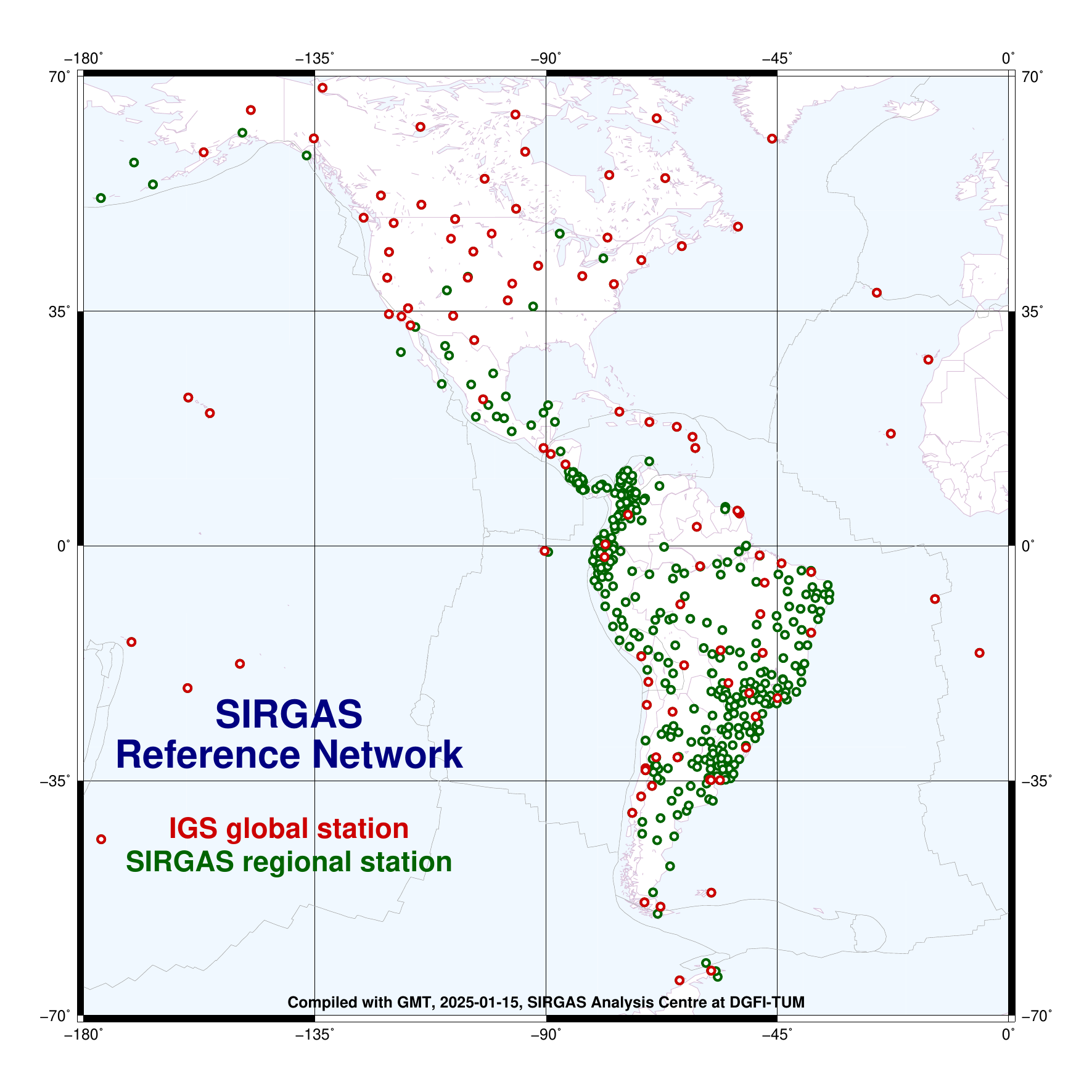The current realization of SIRGAS is a network of about 500 continuously operating GNSS stations with precisely known positions (referred to a specific reference epoch) and their changes over time (station velocities). The SIRGAS stations are processed the SIRGAS Analysis Centres: IGN-CR (Costa Rica), CEPGE (Ecuador), IBGE (Brazil), IGAC (Colombia), IGM-Cl (Chile), IGN-Ar (Argentina), IGN-Pe (Peru), INEGI (Mexico), IGM-Uy (Uruguay) and USC (Chile). These centres deliver loosely constrained weekly solutions for station positions. The distribution of stations between the analysis centres ensures that each regional SIRGAS station is included in three individual solutions.
DGFI-TUM is responsible for the combination of the solutions delivered by the analysis centres and provides loosely constrained weekly station positions in SINEX format for the computation of mult-year solutions; weekly station positions; and multi-year (cumulative) solutions (positions + velocities) for practical and scientific applications requiring time depending positioning. The weekly positions are especially useful when strong earthquakes cause co-seismic displacements or strong relaxation motions at the SIRGAS stations disabling the use of previous coordinates. The multi-year solutions provide the most accurate and up-to-date SIRGAS station positions and velocities. They are used for the realization and maintenance of the SIRGAS reference frame between two releases of the ITRF. While a new ITRF release is published more or less every five years, the SIRGAS reference frame multi-year solutions are updated every one or two years.

Dr.-Ing. Laura Sanchez
lm.sanchez@tum.de
80333 München
Arcisstr.21
Tel. +49 89 23031-1295
Fax +49 89 23031-1240